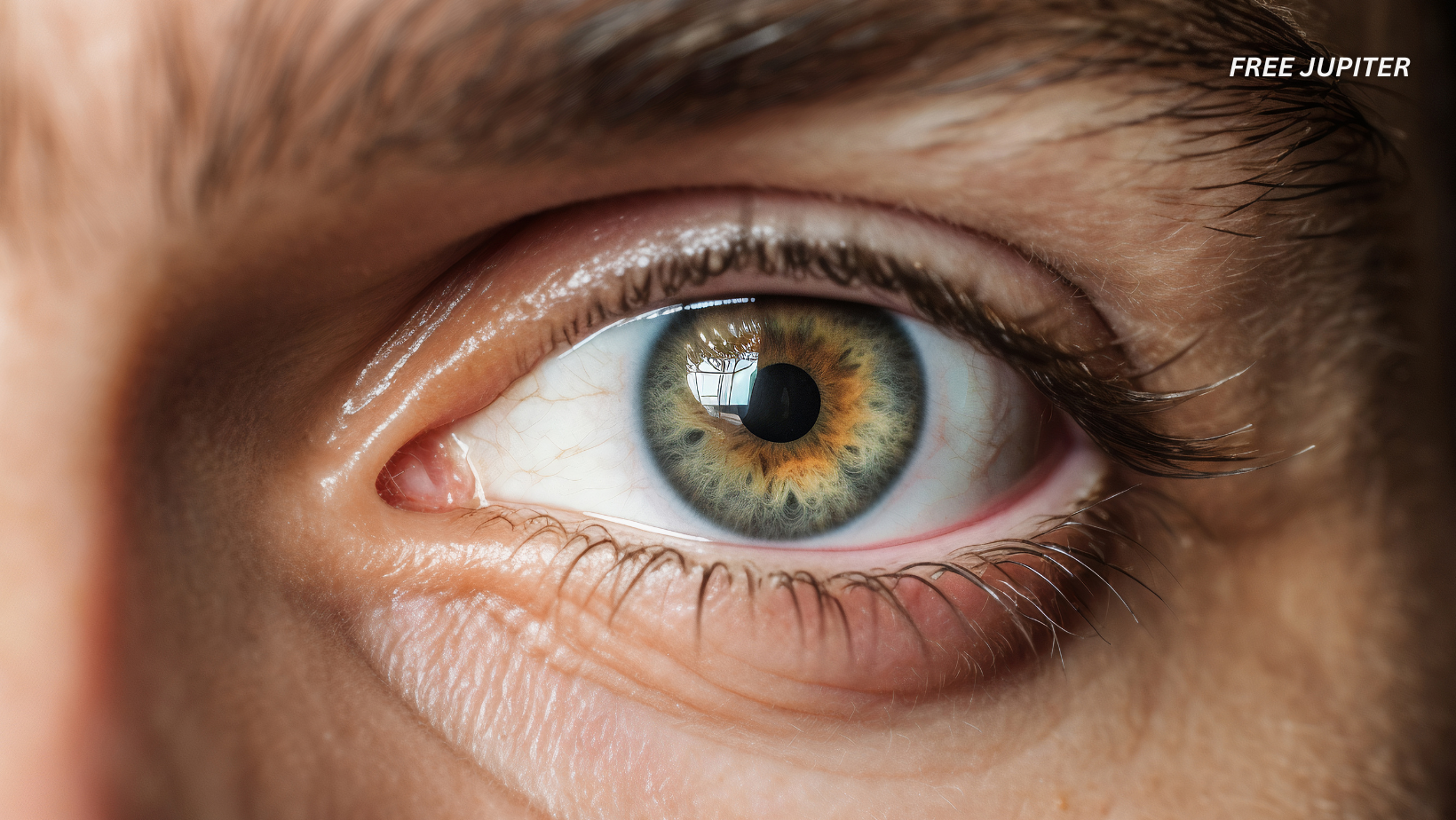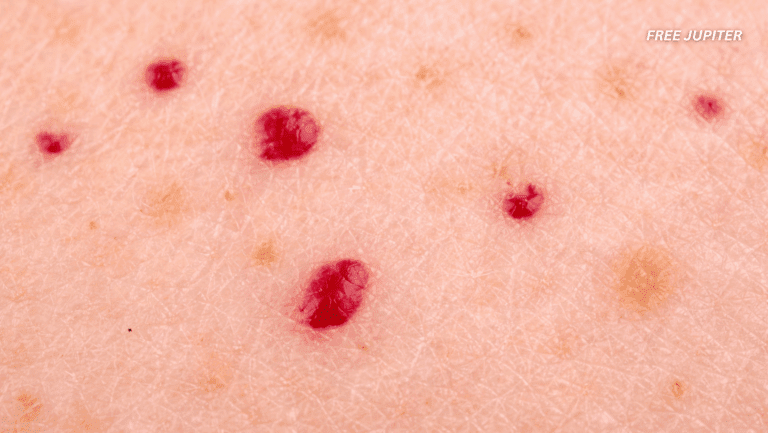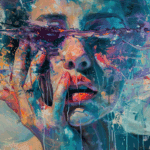Friendly Note: FreeJupiter.com shares general info for curious minds 🌟 Please fact-check all claims—and always check health matters with a professional 💙
Imagine this: you wake up, make your coffee, and instead of reaching for reading glasses, you spend three quiet minutes gazing into a gentle, glowing red light. No, it’s not a meditation ritual or a sci-fi health hack. According to scientists at University College London (UCL), it could be the future of vision care.
A small but fascinating study suggests that daily exposure to deep red light might help restore aging eyesight—especially color sensitivity—in people over 40. It’s natural, non-invasive, affordable, and might even be done from the comfort of your couch.
A Global Problem: The Eyes Have It
Let’s face it—eyes don’t age gracefully. Starting in our 40s, many of us experience some level of visual decline. Reading small text gets harder. Colors become dull. Night driving becomes more stressful. This isn’t just an annoying rite of passage—it’s a public health concern in the making.
According to the United Nations, the proportion of people aged 60 and over will double by 2050. That means eye problems related to aging will become far more common, driving up healthcare costs and lowering quality of life for millions.
Professor Glen Jeffery from UCL puts it bluntly: “As you age, your visual system declines significantly.” And no, it’s not just your imagination—this drop is scientifically measurable. But why does it happen?
The Mitochondrial Meltdown: Why Our Eyes Start to Fail
It all starts with the tiny power plants inside your cells: mitochondria. These microscopic energy generators keep everything from your heartbeat to your brainwaves running. In the eye—specifically the retina—mitochondria are especially crucial.
The retina is the light-sensitive layer at the back of your eyeball, and it’s filled with cells called photoreceptors. These are divided into rods (which help you see in low light and at the edges of your vision) and cones (which handle color and detail). These cells are incredibly energy-hungry, and they rely heavily on mitochondria to function properly.
But here’s the catch: around age 40, mitochondria begin to lose steam. They produce less energy. As a result, the photoreceptors get sluggish. Your color vision fades, your night vision dims, and your visual sharpness drops.
That’s why Jeffery and his team decided to try something radical—what if they could recharge the mitochondria inside those eye cells?
Read more: Close Your Hand—This Fist Test Could Reveal Surprising Truths About Your Personality
A Spark of Light: Using Deep Red to Reboot Aging Eyes
UCL’s researchers turned to light therapy—a growing field of study where specific wavelengths of light are used to stimulate healing or regeneration. It’s been used in skincare, pain relief, and even mood disorders. But could it help eyes?
Turns out, mitochondria respond particularly well to red and near-infrared light, especially wavelengths between 650 to 900 nanometers. This deep red light doesn’t just passively shine on cells—it gets absorbed, triggering a biological reaction that helps mitochondria produce more energy.
In earlier studies, this technique showed positive results in fruit flies, mice, and even bumblebees. Yes, bugs! Their compound eyes share some interesting similarities with ours in terms of how photoreceptors function. Encouraged by this, the researchers took the next step: testing on humans.
The Human Trial: Flashing Lights and Real Results
The team recruited 24 participants—12 men and 12 women—ranging in age from 28 to 72. None had any known eye diseases. Before the trial began, researchers carefully measured each person’s rod and cone function using standard vision tests.
Each participant received a handheld LED device emitting deep red light at around 670 nanometers. For two weeks, they were instructed to hold it up to their eyes for three minutes a day. No staring directly into the sun here—just a gentle glow that can even be absorbed through closed eyelids. Yes, the red light is that powerful.
After the trial, participants underwent the same vision tests. The results were eye-opening—literally.
Read more: Babies That Are Under 6 Months Old Should Never Be Given Water
Who Benefited? The 40+ Crowd Saw the Most Improvement
The younger participants (those under 40) didn’t show much change. But those over 40? That’s where things got interesting.
- Color contrast sensitivity improved by up to 20% in some individuals. This means their cones—responsible for distinguishing between shades like navy and black, or red and orange—were functioning better.
- Rod sensitivity (which helps in dim light) also saw some improvement, though less dramatically.
In short: a few minutes of deep red light daily appeared to revitalize the aging photoreceptors by energizing their mitochondria. Jeffery likens it to charging a phone. “This is like recharging the battery in your eye,” he said.
A Surprisingly Affordable Fix
Perhaps one of the most appealing aspects of this treatment is its cost. The LED device used in the study? It costs about £12 (around $14 USD) to make. That’s less than your average bottle of multivitamins.
This simplicity could make the therapy widely accessible, especially in low-resource settings or for individuals without access to regular eye care. There’s no surgery, no drug, no risk of addiction or serious side effects—just light.
Of course, it’s not a miracle cure or replacement for traditional eye care, but as Jeffery says, “The technology is simple and very safe.”
The Science Still Needs Time to Catch Up
Let’s be clear—this study is small. More extensive clinical trials are needed to confirm the results and better understand how long the effects last, how often the treatment should be repeated, and whether some people might respond better than others.
For example, could red light therapy prevent future vision loss? Could it help people with more serious eye conditions like macular degeneration or glaucoma? These are exciting questions, but they remain unanswered for now.
Still, this early evidence is hopeful—and suggests a future where maintaining your vision could be as easy as turning on a light.
Read more: Doctors Say That This Is the Best Time to Eat Dinner
In Conclusion: The Eyes Might Have a Bright Future
As science races to keep pace with a rapidly aging world, innovations like deep red light therapy offer a refreshing change—simple, safe, and rooted in natural biology.
The idea that we can harness light—a force we take for granted every day—and use it to revive our own biological systems is equal parts poetic and practical.
So while we wait for more studies to confirm the long-term benefits, one thing’s for sure: when it comes to treating age-related vision loss, the future might just be red—and remarkably bright.
Disclaimer: The information in this article is for general informational purposes only and is not medical advice. We are not doctors, and this website is run as a family hobby project. Always consult a qualified healthcare professional before making decisions about your health. Please fact-check any claims and use this content as a starting point, not a substitute for professional guidance.










